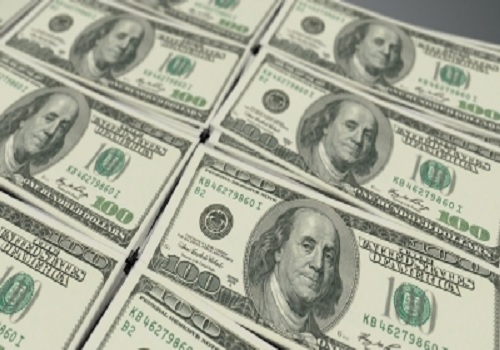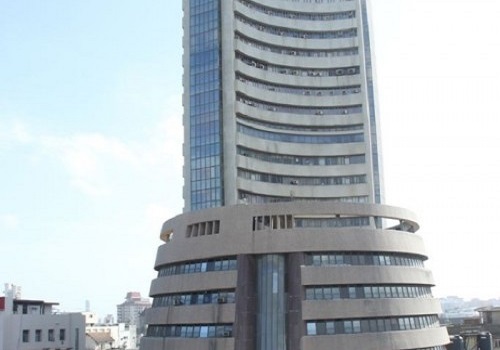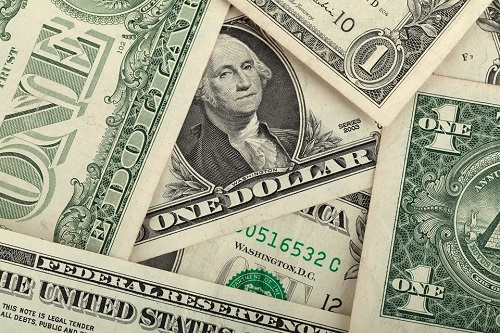Key gauges end Friday`s trade on higher note amid global rally

Follow us Now on Telegram ! Get daily 10 - 12 important updates on Business, Finance and Investment. Join our Telegram Channel
https://t.me/InvestmentGuruIndiacom
Download Telegram App before Joining the Channel
Indian equity benchmarks ended Friday’s trade on higher note propelled by heavy buying in IT, TECK and Metal stocks amid a rally in global markets after lower-than-expected US inflation data. Key gauges remained strong during the day following a gap-up start as a strong rupee against the US dollar and unabated foreign capital inflows further bolstered sentiment. Traders took encouragement as State Bank of India has pencilled in lower current account deficit at 3 per cent for this fiscal as against the minimum consensus of 3.5 per cent, citing rising software exports, remittances and a likely $5-billion jump in forex reserves via swap deals. Sentiments remained up-beat with S&P Global Ratings stating that about half of the Indian companies that it rates are getting a boost in their core profitability from rupee depreciation. It said ‘much of our rated India corporate portfolio has sizable US-dollar linked revenue and, therefore, is not exposed to rupee depreciation. This encompasses entities in the IT, metals, and chemicals sectors. About half of the firms we rate are getting an EBITDA boost from currency weakening.’
Continuous buying in last leg of trade helped markets to end near intraday high levels as optimism remained among traders as the Union Government released two instalments of tax devolution to State Governments amounting to Rs 1,16,665 crore, as against normal monthly devolution of Rs 58,333 crore, in line with the commitment of Government of India to strengthen the hands of States to accelerate their capital and developmental expenditure. Market participants overlooked reports stating that Moody's slashed India's GDP growth projections for 2022 to 7 per cent from 7.7 per cent earlier as the global slowdown and rising domestic interest rates will dampen economic momentum. This is the second time that Moody's Investors Service has cut India's growth estimates. In September, it had cut projections for the current year to 7.7 per cent from 8.8 per cent estimated in May.
On the global front, European markets were trading mostly in green even as official data showed the U.K. economy contracted for the first time since early 2021 in the third quarter. Gross domestic product shrank 0.2 percent sequentially, offsetting the 0.2 percent gain in the second quarter. However, the pace of decline was slower than forecast of -0.5 percent. Asian markets settled higher on Friday as China cut quarantine restrictions for inbound travelers and flights, and softer-than-expected U.S. inflation data fueled hopes the Federal Reserve will ease up on its interest-rate increases in the coming months.
Back home, tea industry stocks were in watch as Indian Tea Association (ITA) said that tea exports from India are expected to increase to around 230 million kg during this calendar year from 196 million kg last year on the back of buoyancy in export markets and Sri Lanka’s loss of crop. FMCG industry stocks were in focus with a private report that the country's FMCG industry continued to witness consumption slowdown in the September quarter, with rural markets registering a higher decline in volumes compared to the three months ended June.
Finally, the BSE Sensex rose 1181.34 points or 1.95% to 61,795.04 and the CNX Nifty was up by 321.50 points or 1.78% to 18,349.70.
The BSE Sensex touched high and low of 61,840.97 and 61,311.02, respectively. There were 22 stocks advancing against 8 stocks declining on the index.
The broader indices ended in green; the BSE Mid cap index rose 0.15%, while Small cap index was up by 0.33%.
The top gaining sectoral indices on the BSE were IT up by 3.70%, TECK up by 3.21%, Metal up by 2.27%, Realty up by 1.71% and Financial Services up by 1.81%, while Auto down by 0.34%, PSU down by 0.12%, FMCG down by 0.10%, Power down by 0.08% and Utilities down by 0.05% were the top losing indices on BSE.
The top gainers on the Sensex were HDFC up by 5.84%, HDFC Bank up by 5.62%, Infosys up by 4.51%, Tech Mahindra up by 3.64% and HCL Technologies up by 3.56%. On the flip side, Mahindra & Mahindra down by 0.83%, SBI down by 0.76%, Kotak Mahindra Bank down by 0.73%, ICICI Bank down by 0.42% and NTPC down by 0.38% were the top losers.
Meanwhile, citing rising software exports, remittances and a likely USD 5-billion jump in forex reserves via swap deals, State Bank of India (SBI) in its latest report has said that the Current Account Deficit (CAD) may be come at 3 per cent for this fiscal as against the minimum consensus of 3.5 per cent. Soumyakanti Ghosh, the chief economic advisor at SBI in report stated that every USD 10 increase in crude prices impacts the CAD to the tune of 40 basis points while the same on fuel inflation is 50 bps and also results in 23 bps decline in growth. He added that CAD has a counter cyclical shock absorber.
Ghosh said exchange rate is the major contributor to software exports growth and 40 per cent of its variation is explained by exchange rates. He said ‘If we translated these numbers in actual terms, every Rs 1 fall against the dollar leads to an increase in software exports by USD 250 million’. He also said the strong remittances and software exports have lowered CAD by 60 bps in the June quarter, and added that if this trends continued in the September quarter, then CAD would be below 3.5 per cent in the second quarter and at 3 per cent in the full fiscal. Even otherwise, he said the chances of it exceeding 3.5 per cent of GDP are minimal.
According to Ghosh, forex reserves, which have declined from USD 642 billion in September 2021 to just about USD 531 billion last week, are expected to rise by USD 5 billion as swap transactions reverse. The biggest impact on CAD is oil imports, which form as much as 30 per cent of the country's import bills. Therefore, any increase in oil price has a direct impact on the trade deficit by increasing the import bill and consequently widening the CAD.
Software exports have been rising with the share of offsite mode of exports of software services by domestic IT services companies soaring to 88.8 per cent in FY22 from 82.8 per cent five years ago. He said that a positive shock to oil prices leads to immediate and sharp increase in CAD but the same dissipates completely in about eight quarters. In case of GDP, positive fall in oil prices leads to immediate decline which, however, starts reversing after three quarters and completely dissipates after the seventh quarter.
The CNX Nifty traded in a range of 18,362.30 and 18,259.35. There were 37 stocks advancing against 12 stocks declining, while 1 stock remained unchanged on the index.
The top gainers on Nifty were HDFC up by 5.72%, HDFC Bank up by 5.72%, Infosys up by 4.58%, Tech Mahindra up by 3.65% and HCL Technologies up by 3.47%. On the flip side, Eicher Motors down by 4.91%, Hero MotoCorp down by 1.75%, SBI up by 0.95%, Britannia Industries down by 0.84% and Mahindra & Mahindra down by 0.71% were the top losers.
European markets were trading mostly in green; France’s CAC increased 28.75 points or 0.44% to 6,585.58 and Germany’s DAX increased 48.95 points or 0.35% to 14,195.04, while UK’s FTSE 100 decreased 21.31 points or 0.29% to 7,354.03.
Asian markets settled higher on Friday, tracking Wall Street gains overnight and as cooler than expected US inflation data fuelled hopes that the US central bank will cut the size of upcoming interest rate hikes. Japanese shares hit a two-month high as growth in Japan producer prices moderated in October due to easing global inflation. Chinese and Hong Kong shares improved further after Chinese health authorities announced shortening of quarantine period for inbound travellers. While, the Chinese yuan marked its strongest levels in more than a month. Although, data showed that new bank lending in China tumbled more than expected in October from the previous month and broad credit growth also slowed as Covid restrictions weakened economic activity and credit demand.
Above views are of the author and not of the website kindly read disclaimer






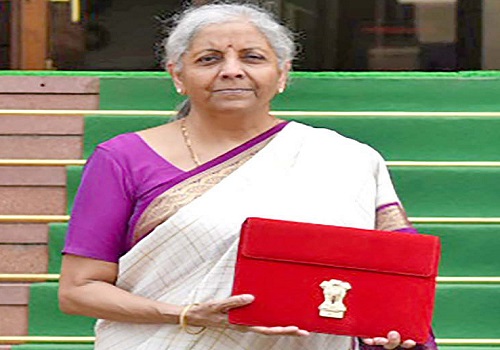


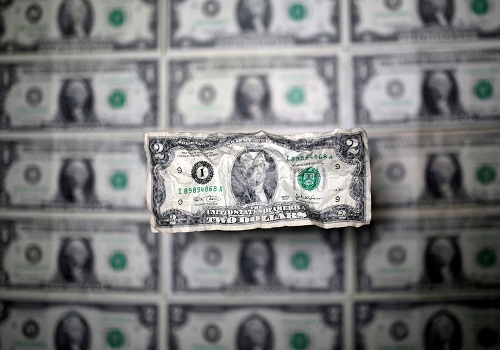
Tag News

Weekly Market Analysis : Markets strengthened recovery and gained nearly 2% in the passing w...
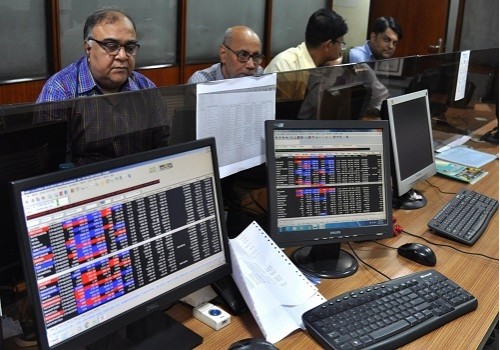
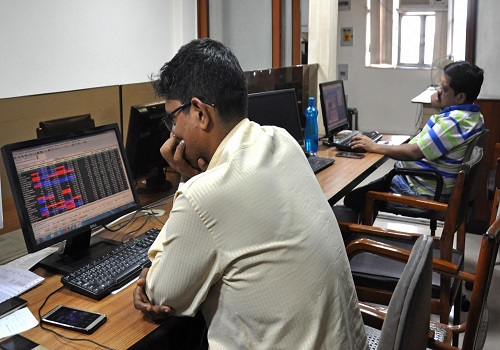
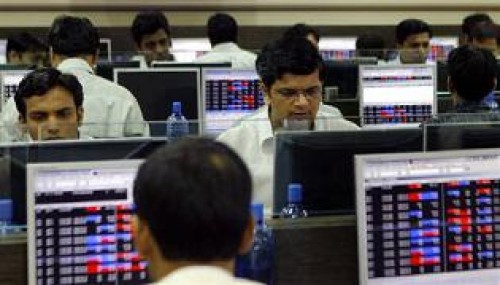
More News

Accumulate Longs In Nifty With SL OF 15600 Levels - HDFC Securities





